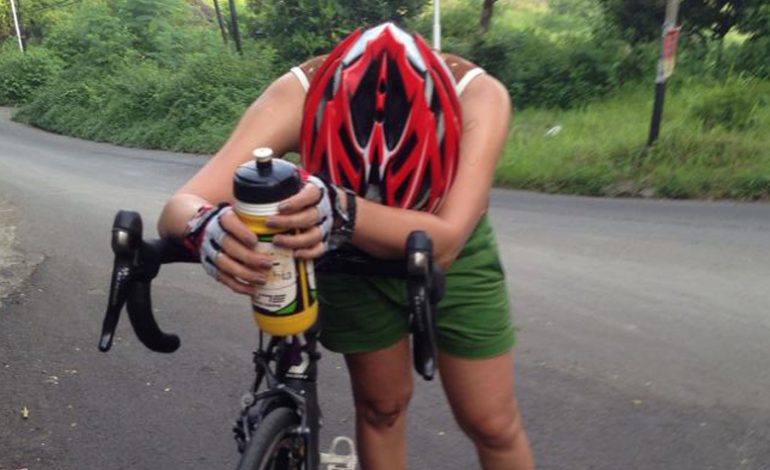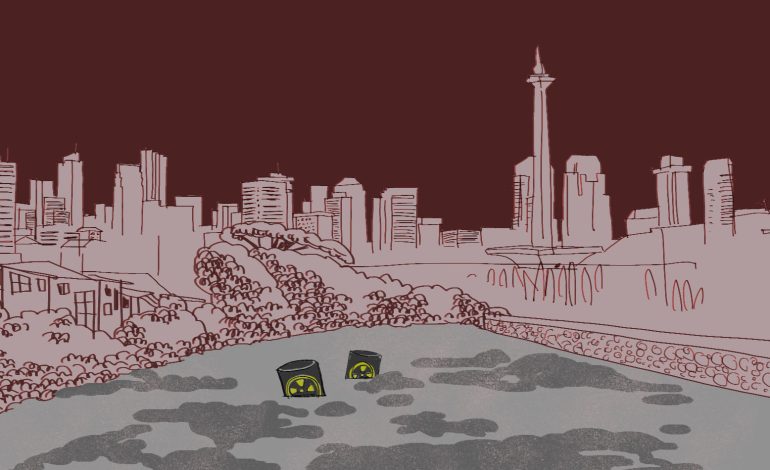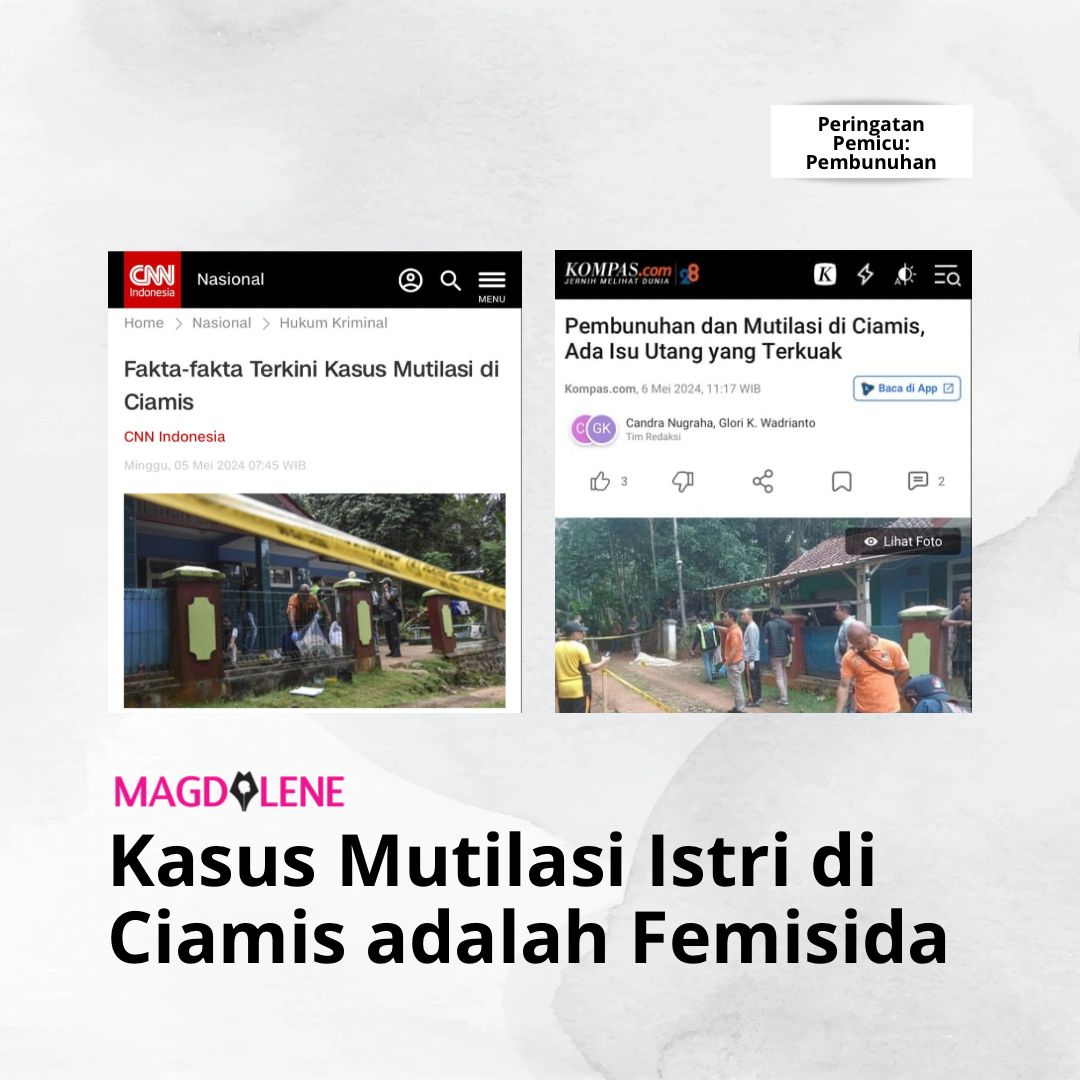Feasting and Riding in Semarang
The hilly roads of Semarang are not for the faint-hearted cyclists, but the food makes up for the punishing ride.

I’d been pedaling and pedaling, but my legs were as nimble as two sacks of drying cement. Any second now I would have to unclasp my cleated shoes before the pedaling involuntarily stopped altogether – when I finally crashed into an invisible wall – and the bike started to roll back down the steep gradient with potentially disastrous result. In my diminishing mind, there was only one option to prevent this catastrophe from happening: stop.
“You can do it!” My new riding buddy Henry Giant cheered me, as if he’d read my mind, “Just breathe steadily!”
From his bike he blew out air audibly in a controlled rhythm for me to follow.
If I had even a fraction of the strength needed to let the irony sink in – a yoga teacher being coached on breathing by a cyclist – I might find this mildly amusing. But the mind is a funny thing. It ceases non-essential activities when the two most important organs, the heart and the lungs, are hard at work.
It was the fourth day of a road trip my husband and I took that covered a distance of 1,700km (including 200km on our road bikes) through Central and West Java, where we combined the pleasure of eating and cycling. Only the latter did not feel so pleasurable at the moment.
Semarang was the second of the five towns we visited. The Central Java’s capital is divided into two parts, the hilly part of the south (the foot of Mt. Ungaran) and the seashore area of the north, where most of the commercial and administrative activities are centered. Our opening battle scene took part in the city’s hilly region.
We’d been working the phone on our way here, calling a couple of contacts given by my husband’s cyclist friend. We finally got a hold of one, a guy named Julius, who manages a bike shop in town. As it so happened, he was going to ride with some people the next day.
We met him at his bike store as soon we hit town. Julius is a bespectacled baby-faced 25 years old with a passion for bicycle and food.
“I thought you were much older from your voice,” he said when we shook hands. The feeling was mutual, though we chose not to dig deeper into how old he thought we actually were. His dad and uncle would join us the next day, he said.
Calves of Steel
At 5:30 the next morning the three of us left the hotel, passing Sunday morning’s exercising crowds that swarmed car-free roads. We left the mob behind to begin the climb, the first of the “7-Up Route”.
Stopping at the top so Julius could call the rest of the group, I was proud of myself for doing well. That is until he told us it was called “Tanjakan Ibu-Ibu” (the motherly climb). Out of all the seven hills we were to bike (hence the name), this was the easiest.
We entered a residential area and rolled downhill at a scary speed into a busy street, before turning to a quiet kampung, where a long straight road was going nowhere but up.

It was then I realized that this was not some easy tourist route. A bicycle tour in Tuscany’s rolling hills a few years ago got me hooked on cycling trips, but hard as that one was, this was something that demanded more respect.
Riding next to me, Julius told me not to look up the hill, but to keep looking forward to help keep the morale high. Panting while waiting for the rest of the group to meet us, I checked my Garmin: we’d only been going for 3.5 km, a mere distance separating my apartment and my favorite noodle haunt at home.
Julius’ dad joined us with a couple of his friends named Henry, a guy who owns a bike shop carrying the Giant brand (Henry Giant) and one who owns petrol stations (Henry Oil).
We rode through a couple of more solid but manageable ascends, until we came upon the most treacherous of them all: the Stikubang Climb, an 18-degree slope. Stikubang is the name of a school halfway up the climb, where most cyclists usually stop to catch their breath before braving the steepest stretch.
I stopped at the entrance of the school with the rest of the gang, my heart on the verge of bursting. Hunching over my handlebar, I had no thought – my brain was directing what little energy left to sucking in air and pumping oxygen-rich blood to the rest of my body. With my spent breath, I told them to go ahead and that I would push my bike behind.
Henry Giant offered to take care of my bike because in my state, pushing it up the hill with my bike shoes might prove precarious. I refused feebly, but gave in way too quickly. I watched him ride his bike up, dragging mine with his left hand. I took a big breath and clunked my way up.
The downhill ride that followed was terrifying. There were some constructions in the area, leaving the road scattered with loose gravels, which are bad news for road bikes like ours. I kept my hands on the brakes.
The last climb was less steep, but much longer. I steadied my pace, but after a while the force of fatigue was getting the better of me again.
“Slow down the pace, but keep pedaling. Sit a little more forward and breathe slower,” Henry gave me more tips. When I told him I couldn’t go on, he asked if I needed a push. I nodded weakly.
Riding next to me, he placed his hands on my mid back and I felt a gentle nudge. Physically it was a slight relief, but psychologically I felt massively lighter. I pedaled on, one breath at a time, passing my husband who was pushing his bike. He let go of my back as I rode the last part before the hilltop. And then it was over. This must be what marathoners feel like, I thought.
From then on, it was an easy rolling course. We stopped at a roadside stall for a breakfast of delicious lodeh (coconut vegetable stew) and omelet, washing it down with a cup of sweet tea.
I had a new-found respect for these Semarang cyclists, who are, except Julius, in their late 40s or 50s. Every year with hundreds other cyclists they ride to Jakarta, covering nearly 500km in two days.
Food Galore
The culinary part of our trip began a few hours later, when Julius came to take us for lunch. We had swikee, the succulent breaded and deep fried frog legs with broth and rice. Then we stopped at a street hawker selling es dawet, a dessert of pink cendol (the jelly-like pasta made of rice flour) and two pieces of durian drowned in shaved iced with coconut milk and palm sugar. At the next stall we tried tahu gimbal, a dish made of diced tofu, small prawns fried in flour, white cabbage and rice cake drenched in spicy peanut and shrimp paste sauce.
That night, we had nasi ayam (chicken rice), Semarang’s most popular street food. Set up on the sidewalk after dark, these nasi ayam stalls are the original fast food, a hit-and-run fare. A woman sitting behind a low table of various dishes served our food in a conical shaped banana leaf. You eat it with one hand holding your organic plate sitting on a plastic stool, while people standing behind you ready to pounce on the next available seat.
The dish is similar to nasi liwet, but don’t tell a Semarang native that because they would categorically dismiss it. The savory rice was served with a spicy squash stew, shredded chicken, curried tofu, and an egg that have been hardboiled in sweet dark soy sauce. On the table were bowls of assorted chicken parts that had been marinated and fried.
No trip to Semarang is complete without tasting its loenpia or lumpia, the savory pastry of Chinese origins that is similar to spring rolls. Legend has it that all the loenpia shops and stalls in town had one origin, a small shop in China Town.
That afternoon the shop was packed with people. There were no more lumpia but we could order for the next day. We bought 10 and were told to pick it up at 10 a.m. When we returned the next day, the place was overcrowded with desperate-looking people.
My husband had been in there for 15 minutes when he returned to the car irritated.
“Forget it! They haven’t even made it.”
Like us, those customers had ordered the day before, but still had to wait for hours for their lumpia. There’s no queuing – the system was designed to test customers’ patience.
We left and found another place, equally popular but more customer-friendly. Within a few minutes my order of six fried lumpia was ready. Big and piping hot, it was filled with shredded bamboo shoots, veggies, scrambled eggs and minced chicken.
I slathered some of the slimy plum sauce on it and bit into the spring onion and bird’s eye chili. It tasted of something old-fashioned, heavy and aromatic with a slight hint of sweetness. I knew then that this taste would forever link me to Semarang.












